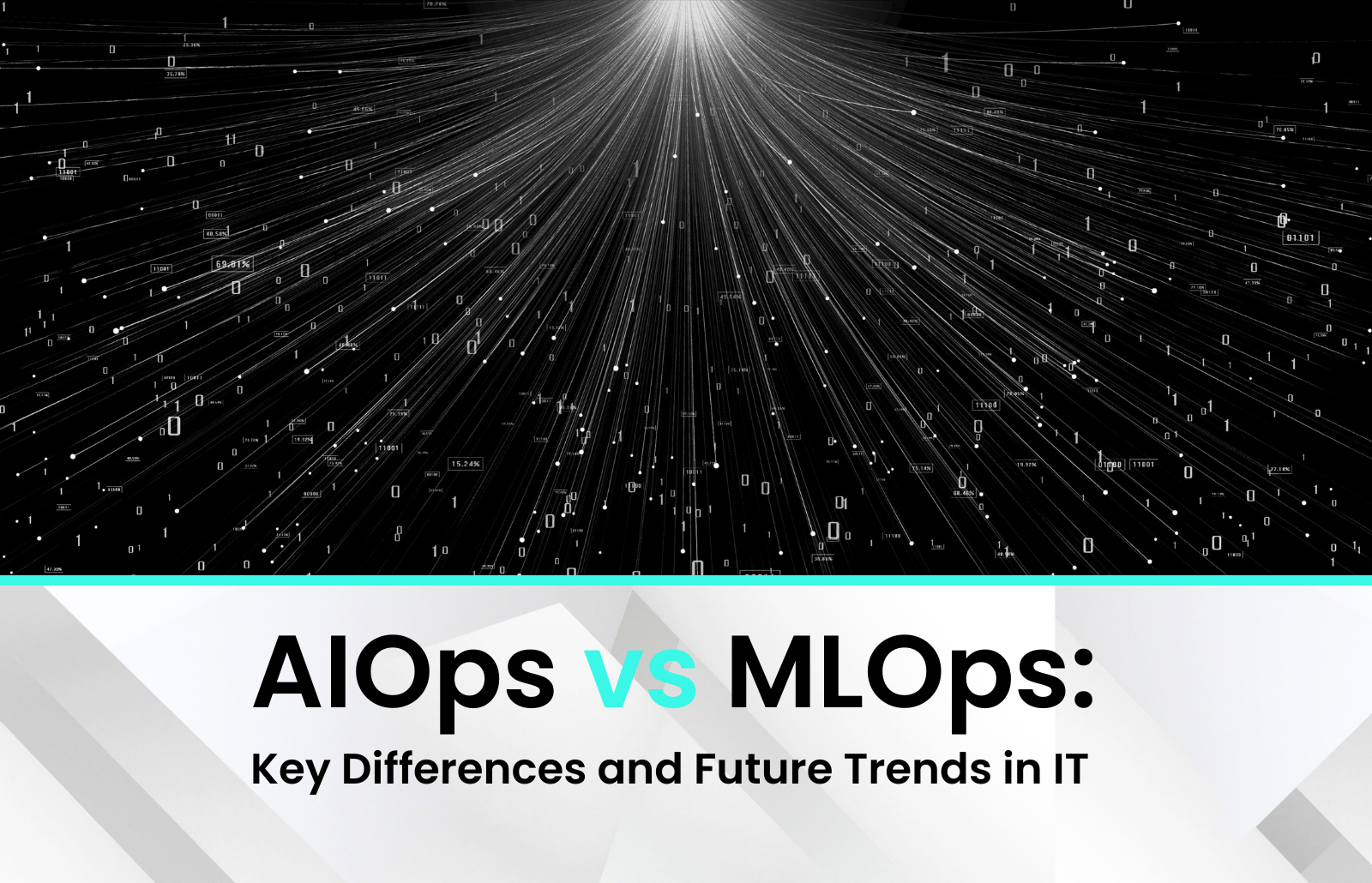In the rapidly evolving landscape of technology, organisations are increasingly turning to AIOps and MLOps to enhance operational efficiency and harness the power of data. AIOps leverages artificial intelligence to optimise IT operations, automating processes and predicting potential issues before they escalate. This proactive approach ensures minimal downtime and improved service reliability. Conversely, MLOps focuses on the intricate lifecycle of machine learning models, from development to deployment, facilitating seamless integration into business workflows. As the demand for efficient management of these technologies intensifies, it becomes essential for organisations to understand the unique roles, advantages, and challenges of AIOps and MLOps. This understanding is crucial for maintaining a competitive edge in a complex IT environment. Exploring these core concepts not only highlights their significance in current operations but also unveils promising innovations on the horizon that will shape the future of IT management.
1. AIOps and MLOps: Core Concepts and Functions
When discussing AIOps vs MLOps, it is important to note that Artificial Intelligence for IT Operations (AIOps) leverages advanced algorithms and data analysis to significantly enhance IT functions. This strategic approach automates and optimises IT processes, empowering organisations to efficiently manage vast data volumes and detect anomalies in real-time. The primary objective of AIOps is to boost operational efficiency by proactively anticipating potential issues and automating incident responses, thereby minimising downtime and enhancing service reliability.
Conversely, MLOps, or Machine Learning Operations, encompasses a comprehensive set of practises that integrate artificial intelligence with DevOps principles to streamline the deployment, monitoring, and management of predictive algorithms. MLOps covers the entire lifecycle of artificial intelligence, from development through deployment to ongoing maintenance. This ensures that systems are not only continuously improved but also seamlessly integrated into business operations.
The comparison of AIOps vs MLOps reveals that:
- AIOps is focused on optimising IT operations.
- MLOps is specifically designed to address the challenges of managing AI models, with the MLOps market projected to see substantial growth by 2025, reflecting the rising demand for effective AI model management.
This trend underscores the critical role of MLOps in contemporary technology firms, where the strategic application of algorithms can drive innovation and provide a competitive advantage. As industry experts emphasise, selecting machine learning use cases requires a careful balance of ROI, feasibility, and complexity, ensuring organisations can fully leverage their investments in this transformative technology.
2. the Unique Roles of AIOps and MLOps in IT Operations
Artificial Intelligence for IT Operations significantly enhances IT functions by automating routine tasks, analysing vast datasets for actionable insights, and providing predictive analytics to avert outages. By combining various data sources, this system offers IT teams a comprehensive perspective of their infrastructure, facilitating proactive responses to potential issues. This capability is particularly critical in complex IT environments, where traditional manual monitoring and management methods fall short.
A case study illustrates the differences between AIOps vs MLOps, showing how AIOps effectively addresses the challenges posed by intricate IT architectures, resulting in improved operational efficiency and proactive issue resolution, while MLOps focuses on the operationalisation of algorithms for artificial intelligence, ensuring their effective deployment and maintenance in production environments. This approach fosters collaboration between data scientists and IT operations teams, streamlining the deployment and monitoring processes.
MLOps is essential for organisations leveraging machine learning to inform business decisions, as it ensures that models remain accurate and relevant over time. Statistics reveal that 21% of organisations utilising generative AI have fundamentally redesigned workflows, highlighting the transformative impact of MLOps on IT operations.
Insights shared during the Zartis AI Summit 2023 underscored the importance of AI-driven operational efficiency and regulatory considerations, showcasing the competitive landscape and the critical role of artificial intelligence operations in today’s market.
3. Advantages and Challenges of AIOps and MLOps Implementation
The implementation of artificial intelligence for IT operations presents numerous benefits, including significantly enhanced incident response times, improved operational efficiency, and the capability to manage extensive data volumes effectively. By automating routine tasks, this technology empowers IT personnel to concentrate on strategic initiatives that foster business growth.
Statistics from 2025 indicate that organisations employing AI operations experience a 27% increase in employee engagement with AI-generated content, underscoring the importance of human oversight in automated processes. Moreover, 21% of organisations utilising generative AI have fundamentally restructured their workflows, illustrating the transformative potential when comparing AIOps vs MLOps.
Nevertheless, challenges remain, particularly concerning data integration from disparate sources. Organisations frequently encounter difficulties in consolidating data effectively, which can impede the performance of AIOps solutions. The necessity for robust artificial intelligence systems is critical to ensure accurate forecasts and insights, as demonstrated by case studies such as Cisco’s AppDynamics Cloud introduction in June 2022. This platform has enabled DevOps and SRE teams to enhance application performance, emphasising the importance of efficient data management in achieving operational objectives, particularly when considering the differences of AIOps vs MLOps, as MLOps offers advantages such as:
- Streamlined deployment of algorithms
- Continuous integration and delivery of predictive systems
- Improved collaboration among teams
These benefits are vital for organisations seeking to leverage the full potential of machine learning technologies. However, challenges related to model drift pose a significant concern, as model performance can deteriorate over time due to evolving data patterns. Cultivating a culture of collaboration between data scientists and IT operations is essential, necessitating organisational change management efforts to promote effective teamwork and communication.
Furthermore, addressing delays in response time is crucial for enhancing customer experience. Slow response times can frustrate customers and lead to churn; however, AI agents can deliver instant replies, markedly improving customer satisfaction. By employing AI agents, organisations can enhance operational efficiency, particularly in rapidly growing companies, ensuring that customer interactions are seamless and productive.
In summary, while AIOps vs MLOps presents substantial advantages, it also includes distinct challenges that organisations must navigate to fully harness its capabilities in an increasingly complex IT landscape.
4. Discuss Future Trends and Innovations in AIOps and MLOps
Looking ahead, artificial intelligence operations are poised to leverage advanced AI techniques, such as deep analysis and natural language processing, to significantly enhance their operational capabilities. Innovations in predictive analytics will empower organisations to anticipate IT challenges with greater precision, fostering a more proactive approach to IT management. Furthermore, the integration of AIOps with diverse IT management frameworks is expected to promote more unified and effective operational strategies, thereby enhancing processes universally.
When considering AIOps vs MLOps, the focus in the MLOps environment is likely to shift towards automating the entire lifecycle of algorithms, encompassing data preparation, system deployment, and continuous oversight. Key advancements, including federated learning and explainable AI, will be essential in enhancing the clarity and accountability of machine learning systems. As organisations increasingly embrace cloud-native architectures, MLOps will evolve to support the deployment of models across multi-cloud environments, ensuring both scalability and flexibility in operations.
Conclusion
The exploration of AIOps and MLOps underscores their pivotal roles in modern IT management, each addressing unique challenges while offering significant advantages. AIOps distinguishes itself with its capacity to automate IT operations and predict potential issues, thereby enhancing operational efficiency and minimising downtime. By integrating diverse data sources, it furnishes IT teams with a comprehensive view, enabling proactive responses in complex environments. In contrast, MLOps concentrates on the life cycle management of machine learning models, ensuring effective deployment and continuous improvement—crucial for organisations aiming to leverage AI-driven insights for informed business decisions. Nevertheless, both AIOps and MLOps encounter challenges that organisations must surmount to fully harness their potential. Data integration issues and model drift pose significant hurdles that can hinder the effectiveness of these solutions. Tackling these challenges necessitates a commitment to robust data management practises and fostering collaboration between IT operations and data science teams.
As the landscape evolves, organisations must remain agile, adapting to technological advancements and shifting market demands. Looking ahead, the integration of advanced AI techniques and automation will further amplify the capabilities of AIOps and MLOps. Innovations such as deep learning, natural language processing, and federated learning will not only enhance operational efficiency but also ensure transparency and accountability in machine learning processes. As organisations navigate the complexities of IT management, embracing these technologies will be essential for maintaining a competitive edge and driving sustainable growth. The proactive adoption of AIOps and MLOps transcends mere trend; it constitutes a strategic imperative for thriving in an increasingly data-driven world.

